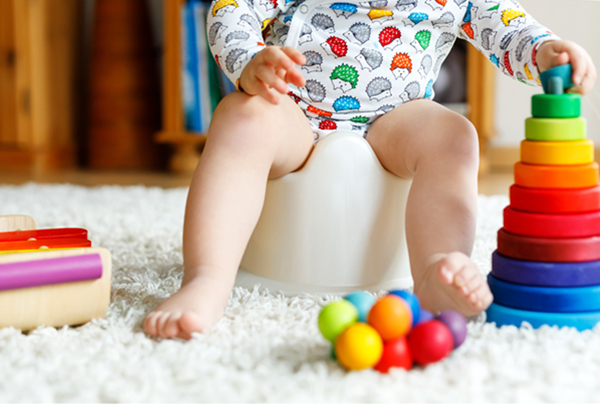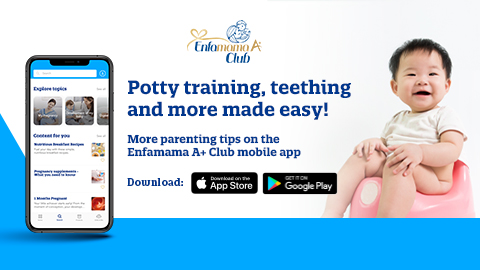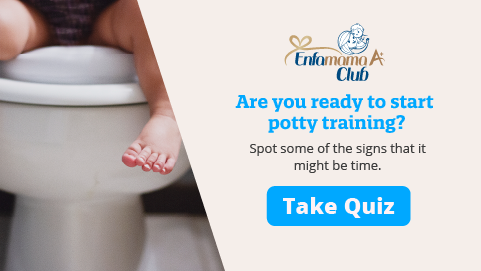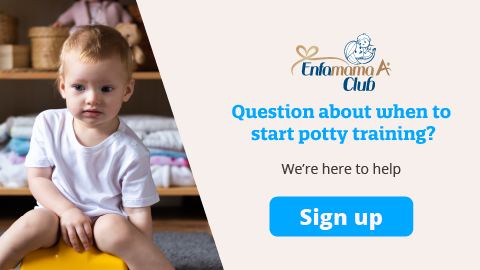
Potty training is a major step for both children and parents. Using the potty is a learned skill that requires a lot of practice from children — and a lot of patience from parents1. “Timing is everything,” the popular saying goes, and the same is true for potty training. Its success depends largely on when it is done. That’s why it is important for parents to understand that potty training should not be based on the child’s age, but the child’s readiness. The best time to start potty training depends on a child’s achievement of certain physical, developmental and behavioral milestones.
Is Your Child Ready for Potty Training?
When choosing to start potty training, parents must take to heart that the development of your child may be different from their peers. This is true regardless if they are of the same age. Majority of parents’ potty training frustrations stem from comparing their non-potty trained child to other potty-trained children of the same age.
While many children show signs of potty training readiness between 18 to 24 months, some children wait until they are three years old. Girls also tend to start early, between 24 to 30 months, while boys train between 30 and 36 months2. A good alternative to using age as a determining factor to start potty training, is to observe if your child exhibits these signs of readiness3:
-
Is your child able to follow basic instructions?
-
Do they have the ability to comprehend and use words about using the toilet?
-
Can your child make the connection between wanting to pee/poop and using the toilet?
-
Can they keep a nappy dry for two hours or more?
-
Does your child have the physical ability to go to the toilet, sit on it for a while, and then come down?
-
Can they pull down nappies, disposable training pants, or underpants?
-
Do they show the desire to use the potty or wear underpants?
If you are able to observe the majority of these signs from your child, chances are they are ready to try on potty training. If not, it might be best to wait for a bit and give your child some time. Forcing a child to potty train when they are not ready will not only result in tears, but in frustration as well.
Ready, Set, Go!
When you have observed that your child is ready to potty train, and you have stocked up your patience reservoir, it’s time to get going. To help you get started, here are some tips4:
-
Be kind with your words. Avoid using negative words (e.g. disgusting, gross, etc) when talking to your child about their bodily fluids. Be generous with praise and encourage cooperation. In addition, accidents are inevitable, so don’t let it hamper whatever progress your child has been making. Deal with accidents with a lot of love, patience and guidance. Keep in mind that your child may be just as frustrated as you are.
-
Have the equipment ready. At the start of your training, try placing the potty chair where it is most accessible to your child, such as where they spend most of their time. As you make progress, you can transfer the potty chair to the bathroom so your child can identify the place where they are supposed to “go”. If you live in a multi-level house, try putting a potty on each floor so your child will not need to go up and down the stairs. It’s all about easy access. Finally, when your child is ready to use the actual toilet, try using a stool so their feet can be on the “ground” while sitting down.
-
Keep a schedule and stick to it. Establishing a schedule might help your child master potty training. Schedule “potty breaks” in the morning, evening and every few hours within the day. During these breaks, have your child sit on the potty for a few minutes. But be watchful even outside of potty breaks. Usually, when children hold their pee or poo, they are uncomfortable and may suddenly become quiet or squirm in a corner. Try watching out for these signs and offer the potty when you observe them. You will eventually see a pattern in your child’s routine. It’s a good idea to use that as your guide in making their potty training schedule.
A child’s readiness may be the single most important factor to keep in mind when deciding to start potty training. Don’t feel pressured even when all of your kid’s playmates are already potty trained. Chances are, your kid is taking their time to get ready and will eventually ditch the nappies on their own. Making sure that your child is ready will not only increase the chances of success, it will also make the entire potty training stage a pleasant and enjoyable bonding experience for you and your child5.
Be part of the Enfamama A+ Club today to unlock a world of privileges and benefits which include free samples, exclusive vouchers, promotions, expert advice and many more!
Expert Resource:
Dr. Raymond Choy Wai Mun
(MCR 18097A)
MBChB (UK), Aviation Medicine (Singapore)
REFERENCES:
1. How to potty train (2020). Retrieved August 14, 2020 from:
https://www.nhs.uk/conditions/pregnancy-and-baby/potty-training-tips/
2. Bedwetting to Potty Training - What You Need to Know (n.d). Retrieved August 13, 2020 from:
https://www.urologyhealth.org/patient-magazine/magazine-archives/2017/winter-2017/bedwetting-to-potty-training-%E2%80%93-what-you-need-to-know
3. When are kids ready to toilet train? (2019). Retrieved August 13, 2020 from:
https://kidshealth.org/en/parents/toilet-teaching.html
4. Potty training: How to get the job done (2019). Retrieved August 13, 2020 from:
https://www.mayoclinic.org/healthy-lifestyle/infant-and-toddler-health/in-depth/potty-training/art-20045230
5. Toilet training (n.d). Retrieved August 14, 2020 from:
https://www.healthychildren.org/English/ages-stages/toddler/toilet-training/Pages/default.aspx







